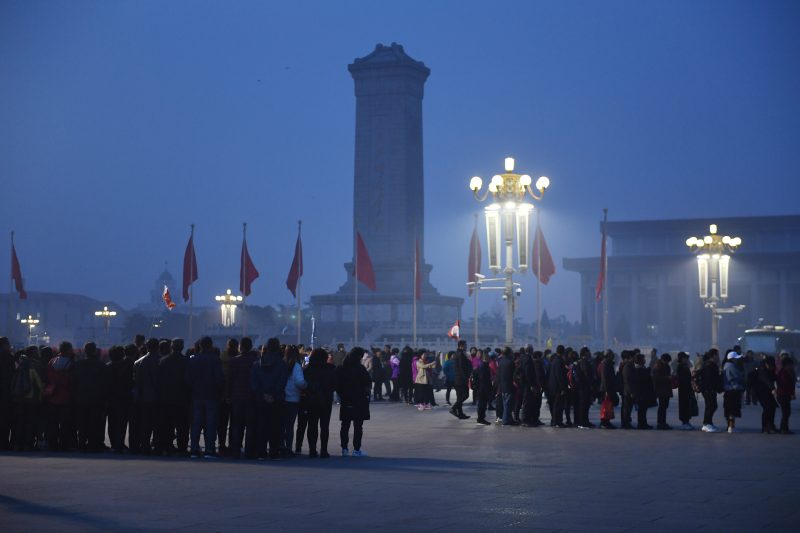China to cut taxes as GDP growth to slow further in 2019
Nearly 3,000 delegates from across China have gathered in Beijing for the annual session of the National People’s Congress (Greg BAKER)
Beijing (AFP) – China lowered its economic growth target and unveiled tax cuts on Tuesday as the country struggles with a crackdown on debt, a slowing global economy and a trade war with the United States.
The 6.0 to 6.5 percent estimate for 2019 was released in a work report for the opening session of the annual National People’s Congress, China’s rubber-stamp parliament.
The slowdown and trade war have turned into major challenges for President Xi Jinping, one year after the NPC boosted his status as the country’s most powerful leader since Mao Zedong by abolishing term limits and etching his name into China’s constitution.
Nearly 3,000 delegates from across the country gathered under smoggy skies and tight security for the two-week session, with legislation aimed at improving conditions for foreign investors topping the agenda.
“We have made a moderate adjustment to our projection on the basis of a thorough assessment of destabilising factors and uncertainties affecting the economic performance,” the work report said.
The government had set a target of around 6.5 percent in 2018 and eventually recorded official growth of 6.6 percent, which was already the slowest pace in nearly three decades.
Independent analysts, however, estimate that the economy’s performance was much worse than the official figure.
This year, three-quarters of provinces have already lowered their annual growth targets.
To combat the slowing growth, policy makers have said they will lower taxes, reduce fees, and streamline red tape.
China will cut taxes and the social insurance companies must pay for their employees by nearly 2 trillion yuan ($298 billion), according to the report.
Beijing will also pick up spending, with China’s targeted fiscal deficit set to increase to 2.8 percent of GDP, from 2.6 percent last year.
– Economic difficulties –
Recent economic data point to the difficulties China faces, with growth in the last three months of 2018 clocking in at 6.4 percent.
In January, an important barometer of prices in the country’s industrial sector eased further, nearing contraction territory and potentially denting corporate profits. China’s imports from the world fell to start the year as well.
Manufacturing activity has shrunk for three straight months, recording its worst performance in three years in February.
But the country’s roller-coaster stock market has recently turned into a bright spot, hitting its highest point in more than eight months on Monday as renewed optimism about a trade deal with the US helped extend a bull run that began in January.
– Trade war –
Relations with the United States deteriorated sharply last year after President Donald Trump hit roughly half of Chinese imports with new tariffs in an attempt to force trade concessions.
But Trump has voiced confidence that he could soon sign a deal with Xi.
“For some time the economic and trade teams of the two sides have carried out fruitful and intensive consultations, and have made important step-by-step progress on many issues of common concern,” said NPC spokesman Zhang Yesui at a news conference Monday.
“We hope that the two sides will continue to hold consultations and reach a mutually beneficial and win-win agreement.”
Chinese officials say they will not resort to large-scale stimulus like during the financial crisis to jolt growth, instead laying out policies to increase consumer demand and improve the business environment.
The legislature will next week pass a new law regulating foreign investment, in a move that could help ease US trade tensions.
The legislation will bar the forced transfer of technology by foreign firms to Chinese joint venture partners, a major bone of contention with the United States.
“Chinese and foreign investment will enjoy the same treatment,” Zhang said.
Disclaimer: This story is published from a syndicated feed. Siliconeer does not assume any liability for the above story. Validity of the above story is for 7 Days from original date of publishing. Content copyright AFP.


